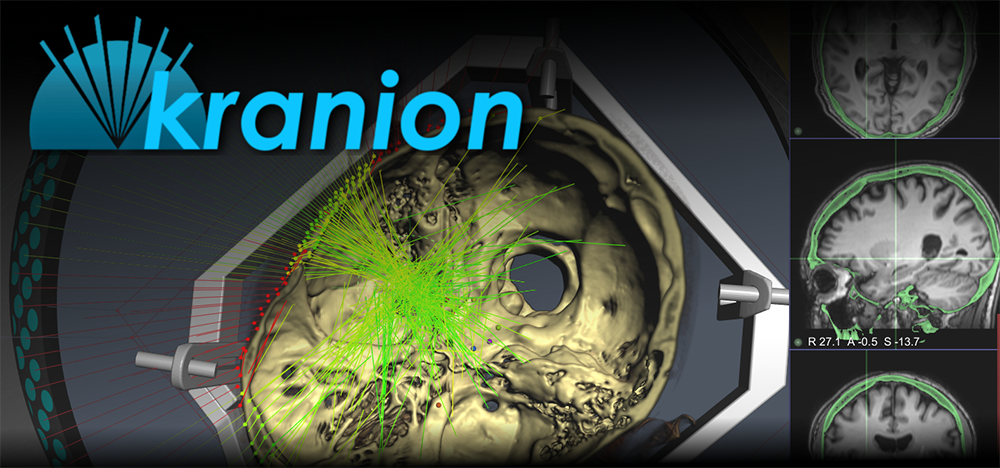The Foundation is pleased to release Kranion®, a highly visual and interactive, open-source transcranial focused ultrasound modeling system for conducting research. Kranion® allows scientists to “see” how the paths of focused ultrasound’s invisible sound waves behave as they pass through a skull.

Developed by the Foundation’s Brain Program Technical Director, John Snell, PhD, and a group of student interns, Kranion® imports MRI and CT studies (in Digital Imaging and Communications in Medicine [DICOM] format) to plan and visualize hypothetical transcranial focused ultrasound procedures.
Among other functions, Kranion® allows researchers to visualize a proposed treatment plan, model skull geometry, calculate skull density ratios for patient selection, analyze skull metrics, and estimate phase aberration and transducer efficiency. “We are pleased to make this software available to the community and believe it will be a valuable tool for patient selection and procedure preplanning,” said Dr. Snell. “I am particularly grateful to collaborators like Dr. Vibhor Krishna and his team at The Ohio State University who validated the skull density ratio calculations. We look forward to collaboration with researchers and clinicians who have interest in using and expanding the functionality of Kranion® for better understanding a prediction of transcranial treatment with focused ultrasound.”
The code, downloadable files, and system requirements are now available as open source on the Foundation’s website.
Please note that Kranion® software is intended for research purposes only.
